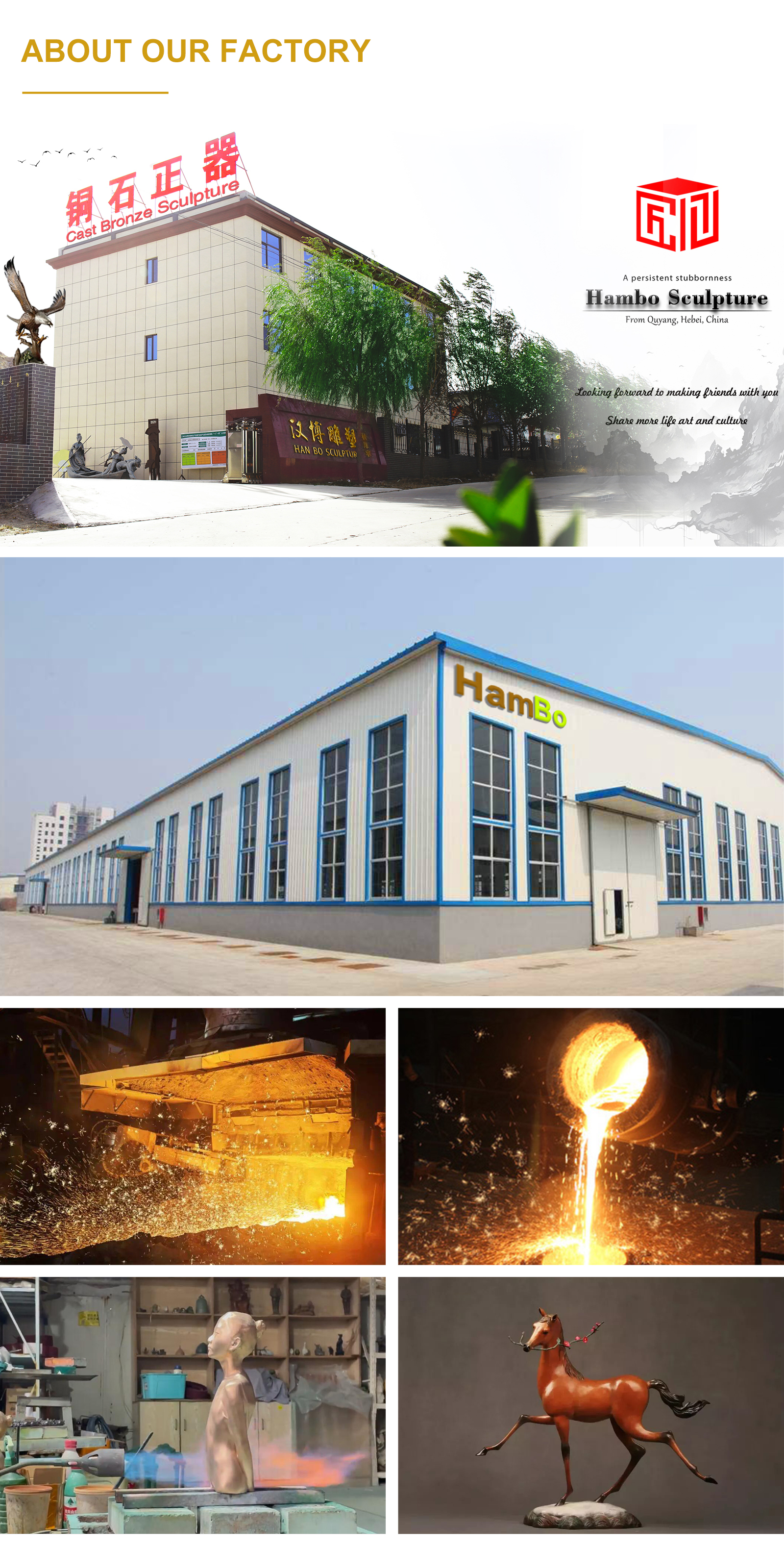In urban parks, squares, or along riverbanks, one can often see a group of bronze sculpted boatmen: a group of boatmen with ancient bronze skin, bare upper bodies, tense muscles, bulging veins. They bend their waist, their bodies almost parallel to the ground, and the ropes on their backs deeply pierce into their flesh. Every muscle seems to be telling the story of struggle, and every wrinkle depicts the vicissitudes of time. Their footsteps were deeply immersed in the mud and sand, struggling to move forward. Their expressions were resolute and solemn, and their gaze was fixed on the distance. It was their unyielding determination towards life and their persistence towards the future. The sunlight shone on the sculptures, outlining their powerful contours, as if freezing time in the era of the boatmen's tenacious struggle against the rivers. This set of sculptures is not just a collection of artworks, but also a witness to history, a bridge connecting the past and present. It presents the dynamic scene of boatmen struggling in turbulent rivers in a static art form, allowing people to cross the boundaries of time and space and intuitively feel the profound heritage and unique charm of boatman culture. The boatman culture, as an indispensable part of human water transportation history, has influenced the lifestyle and spiritual world of countless residents along rivers for a long time. From ancient inland waterway transportation to the transportation of materials for large-scale water conservancy projects, boatmen have embarked on a difficult path of survival with their own flesh and blood, amidst turbulent water currents and steep riverbanks. Their stories, songs, and spirits together constitute the rich connotation of boatman culture. The bronze sculpture of the boatman is the material carrier of this culture, which allows the boatman culture to emerge from vague historical memories and become accessible, vivid and lively.
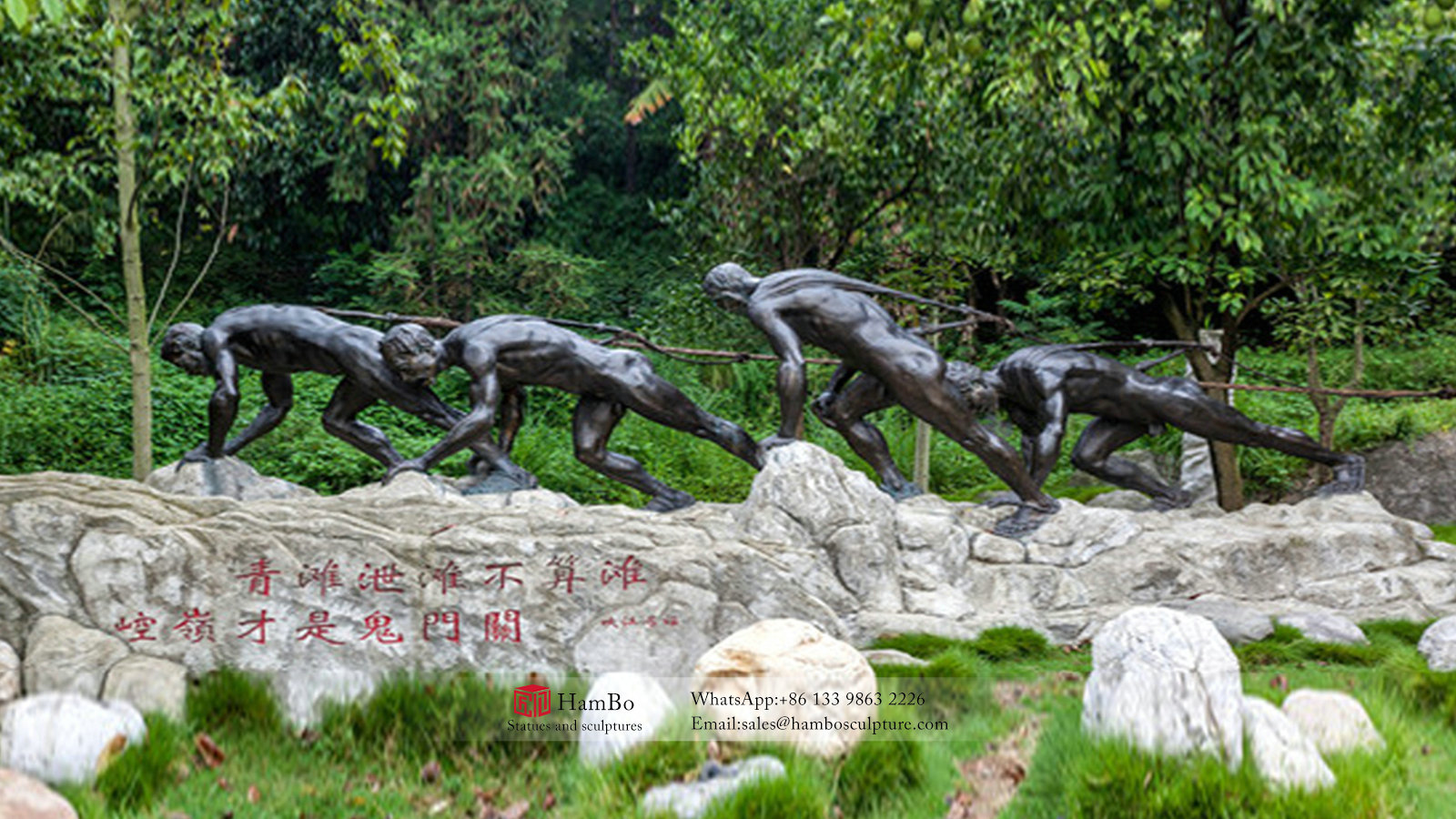
The origin of the boatman culture is closely related to the development of ancient water transportation. In ancient times when productivity was low, people invented ships by utilizing rivers as a natural transportation route to facilitate the transportation and exchange of goods. However, when ships encounter headwinds, dangerous shoals, or shallow waters, it is difficult to propel them forward solely by wind and manual rowing. Therefore, the profession of boatman emerged. The Yangtze and Yellow River basins in China, the Danube and Rhine River basins in Europe, and other regions with abundant water resources have all been active stages for boatmen. In the Three Gorges area of the Yangtze River, high mountains stand tall on both sides, deep canyons, fast flowing water, and numerous dangerous shoals. Since the Han Dynasty, boatmen have been tirelessly fighting against the river here. They pulled heavy boats and struggled along steep riverbanks and rugged mountain roads, opening up an important channel for the exchange of goods between the Sichuan Sichuan region and the outside world. Whether it's transporting essential goods such as grain and salt, or transporting goods like silk and tea, boatmen play a crucial role. In the Volga River basin, vast plains and abundant water systems have nurtured prosperous water transportation. During the Tsarist period, with the development of capitalism, the Volga River became an economic artery connecting Ukraine, the grain producing regions of southern Russia, and the capital city of St. Petersburg. A large number of cargo ships shuttle across the river, and the figures of boatmen can be seen everywhere. They pull ships loaded with goods to transport agricultural products, industrial raw materials, etc. to various places, promoting economic exchanges and development between regions. In different regions, the working scenes and lifestyles of boatmen have their own characteristics. In some water towns in China, boatmen often wear simple clothes, hats, and grass shoes, dragging boats step by step on the muddy riverbanks. Their shouts, shouts, and murmurs of flowing water intertwine to create a unique picture of water town labor. In some mountainous rivers, boatmen need to climb steep slopes, traverse thorny paths, and face even harsher natural environments. Their bodies were marked with blood by ropes, but they still gritted their teeth and persisted, just to safely deliver the ship to its destination. In Europe, the image of boatmen also varies depending on the region. Along the canals in the Netherlands, boatmen wear neat work clothes and pull boats in an orderly manner, demonstrating a methodical work order. On the banks of the Volga River in Russia, boatmen often bare their arms, showing their strong muscles, and vigorously move forward on the vast riverbank, full of a sense of strength and heroic spirit.
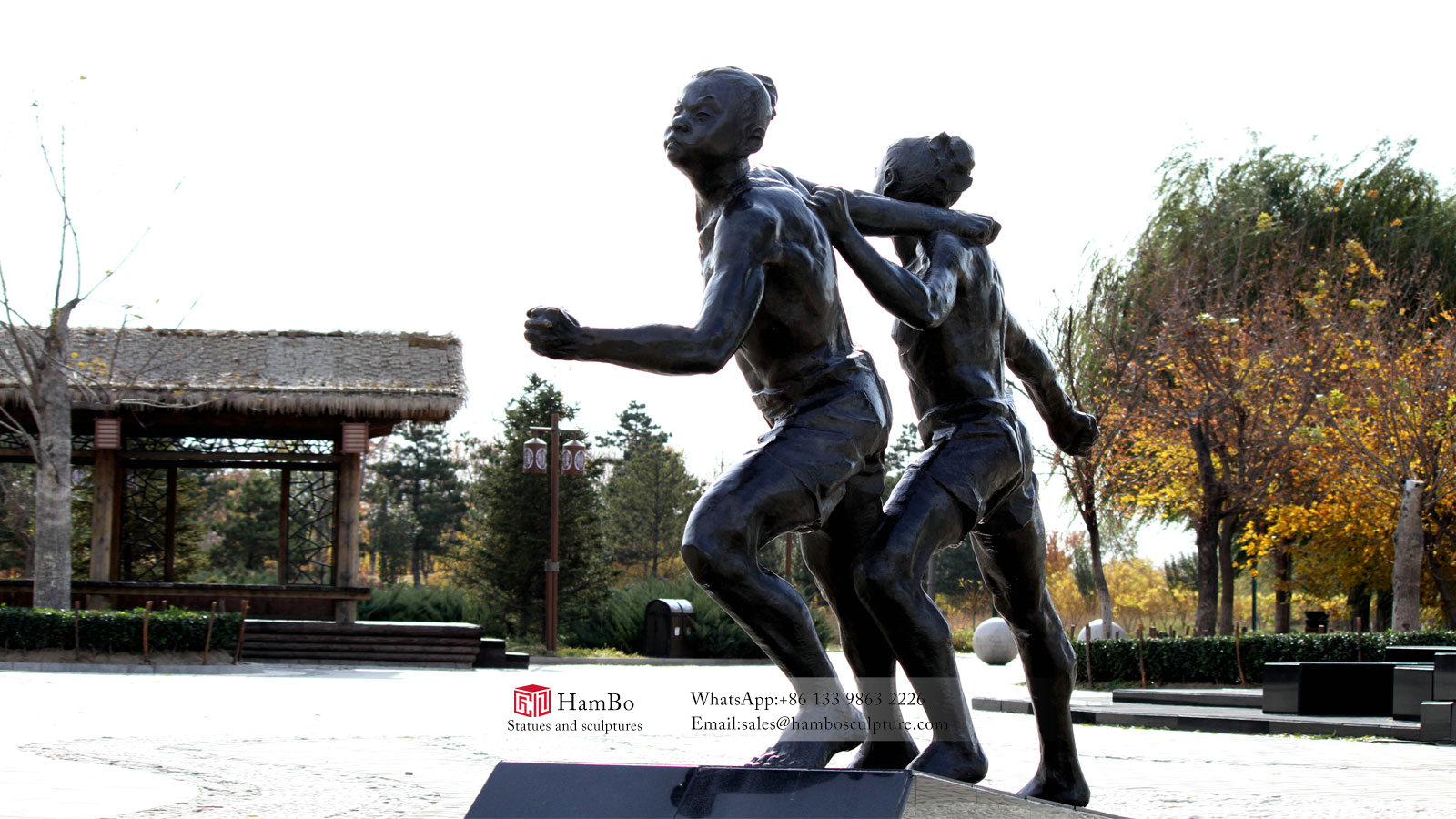
The boatman culture contains rich and profound spiritual connotations, which are formed by boatmen through long-term arduous work and are the spiritual crystallization of their tenacious struggle against nature and life. Teamwork spirit is one of the core elements of slimming culture. Pulling fibers is a collective labor that requires the concerted efforts of numerous boatmen to complete. When pulling fibers in the Three Gorges of the Yangtze River, a boat often requires more than ten or even dozens of boatmen to pull together. Under the command of the boatman's head, they walked in unison, with a unified rhythm, shouting neat trumpets, gathering their strength together. Every boatman knows that although their strength is small, they are an indispensable part of the entire team. Once someone is lazy or uncoordinated, it may cause the ship to stagnate and even pose a danger. This spirit of teamwork is not only reflected in the process of pulling fibers, but also runs through the daily lives of the weavers. They live together on the ship, take care of each other, share food and daily necessities. When faced with difficulties, everyone works together and responds together. When the ship is in distress, the boatmen will jump into the water without hesitation, using their bodies to protect the ship, demonstrating a team spirit of life and death. Perseverance is also an important manifestation of the boatman culture. The working environment for boatmen is extremely harsh, as they have to face turbulent water currents, steep riverbanks, harsh weather, and heavy physical labor. However, no matter how great the difficulties they encountered, they never gave up easily. The barge workers who pull fibers on the salt flats are responsible for pouring salt from the nearby fields into salt carts, which are then transported to train stations or docks dozens of miles away. In the 1950s and 1960s, salt barge workers usually had two people driving a small boat. When the wind was blowing, they would hang a canopy, and when there was no wind or against the wind, they would disembark from the boat and pull fibers by the ditch. They would eat in the wind and sleep outdoors, enjoying both cold and hot weather. The winding salt ditch stretches for dozens of miles and is sparsely populated, making them extremely tired and lonely. Due to wind and sun exposure, their faces, arms, and legs are all tanned, especially in summer. Blood marks are left on their chests and backs by fiberboards and ropes, and they sweat profusely and profusely, almost every day. When feeling extremely thirsty, I quickly took off the small kettle hanging around my waist and took a few sips of cold water. When I am too tired to take a step, I roll up a dry cigarette and close my eyes to take a few sips, which can be considered a brief enjoyment. Then he leaned forward again and continued to move forward along the narrow and narrow path like a snail. Nevertheless, they persisted in their posts day after day, year after year, overcoming all difficulties and obstacles with tenacious perseverance.
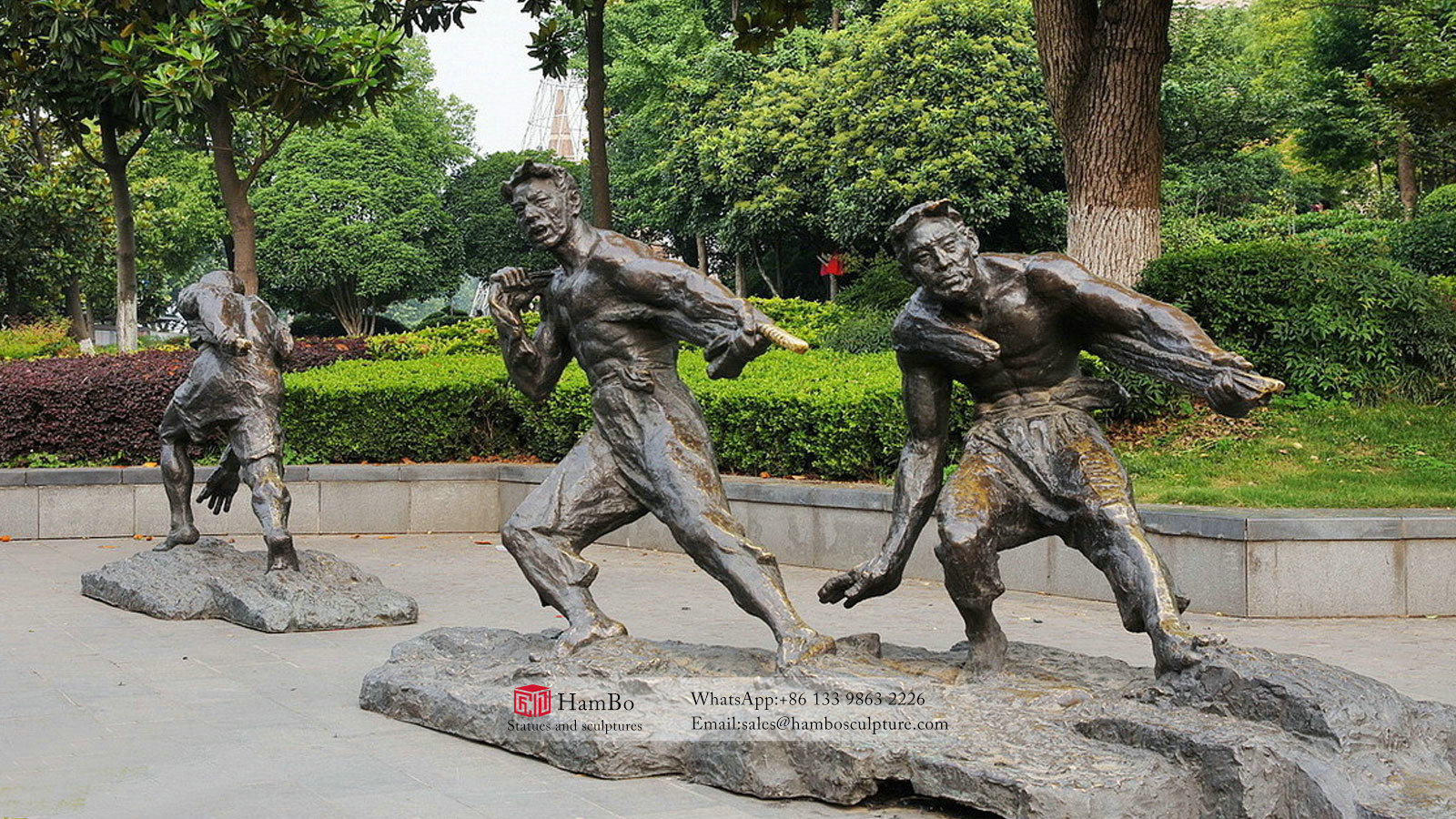
The bronze sculpture of the boatman is like an immortal historical monument, permanently capturing the years of the boatmen's struggle on the river. In the long river of history, the life and work scenes of boatmen were once an important part of the water transportation era. However, with the development of the times, mechanical power gradually replaced manual pulling, and the profession of boatmen gradually disappeared from people's sight. However, the bronze sculpture of the boatman has brought this period of history back to people's eyes, becoming a link between the past and the present. Before the bronze sculpture of the boatman, people's understanding of boatman culture could often only be obtained through written records in ancient books, folk legends, and memories of the older generation. Although these methods can convey some information about boatman culture, they lack intuitiveness and vividness. Written records are often abstract, making it difficult for later generations to truly feel the hardships of the boatmen's work; Folk legends may undergo deformation and lose their original true appearance during the transmission process; And the memories of the older generation will gradually blur over time. The emergence of the bronze sculpture of the boatman filled this gap. It vividly presents the images, movements, expressions, and other details of the boatmen in a three-dimensional and concrete form, allowing future generations to witness the scene of the boatmen pulling fibers and experience the hardships they face firsthand. When people stand in front of the bronze sculpture of the boatman, it seems like they can travel through time and space, see the boatmen pulling heavy boats step by step under the scorching sun and in the cold wind, and hear their hoarse and powerful trumpet sounds echoing in the canyon. This intuitive feeling is incomparable to both written and oral traditions. It has left a deep impression on people's minds about the culture of boatmen, preventing this historical memory from being overwhelmed by the tide of time.
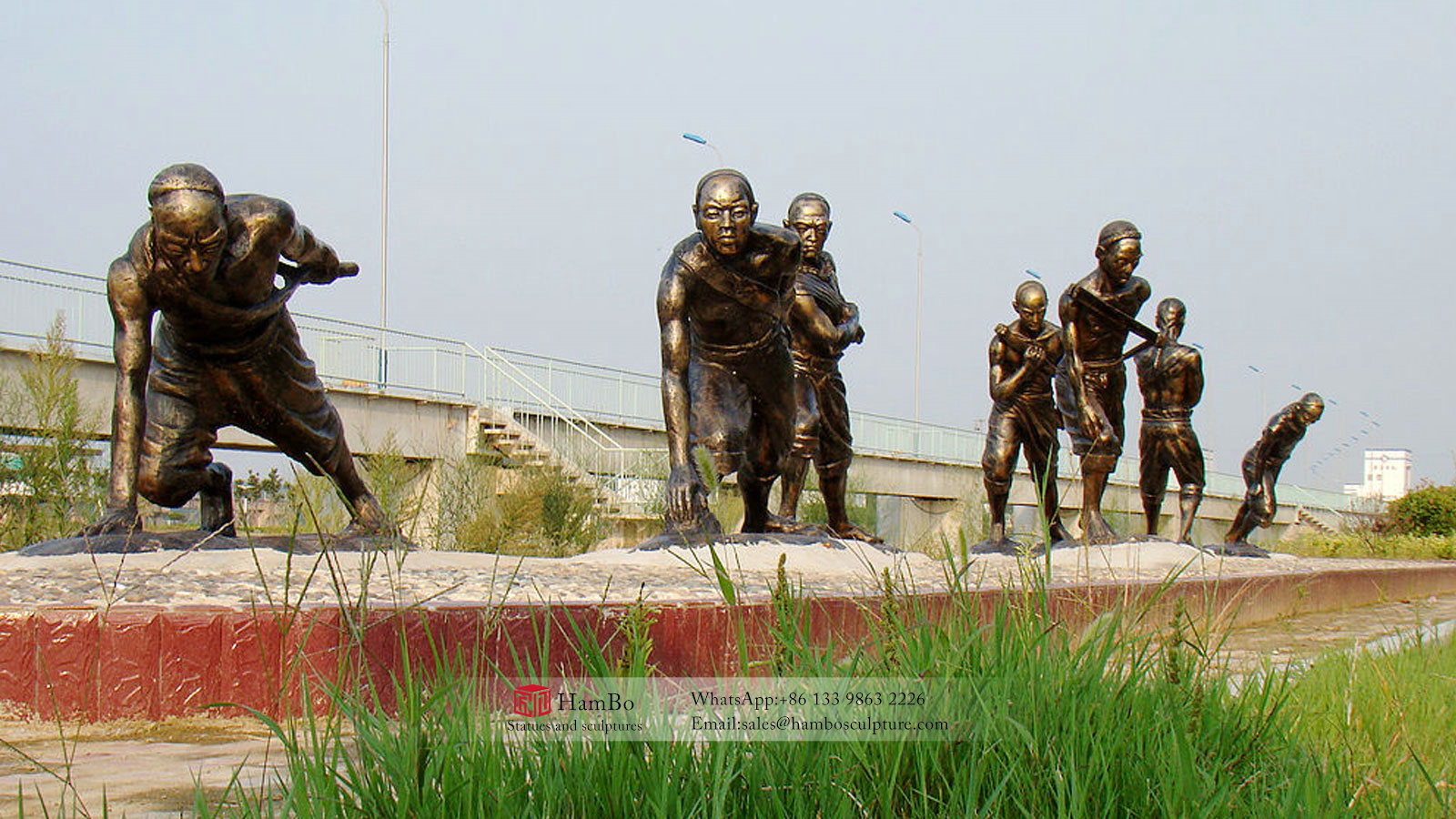
The bronze sculpture of the boatman is not only about shaping the image of the boatman, but also about inheriting and promoting the cultural spirit of the boatman. In their long-term life of pulling fibers, boatmen have developed valuable spiritual qualities such as perseverance, unity and cooperation, optimism and openness. These spiritual qualities are the core connotation of boatman culture and an important component of the Chinese national spirit. The sculpture of the copper boatman vividly showcases these spiritual qualities through artistic techniques, allowing future generations to appreciate the sculpture while also being inspired and inspired by these spirits. In the sculpture, the tense muscles, forward leaning bodies, and resolute expressions of the boatmen all demonstrate their unwavering perseverance. Faced with the turbulent river, steep banks, and heavy labor, the boatmen never retreated, always sticking to their posts and moving forward step by step. This tenacious spirit still holds significant value in today's society. When facing difficulties and setbacks in life, people can draw strength from the bronze sculpture of the boatman, learn from the indomitable spirit of the boatman, bravely face challenges, and persistently pursue their goals. In the fiercely competitive workplace, when people encounter work difficulties or career development bottlenecks, thinking about the difficulties faced by boatmen in pulling fibers will motivate them to overcome difficulties, strive to improve their abilities, and achieve career breakthroughs.
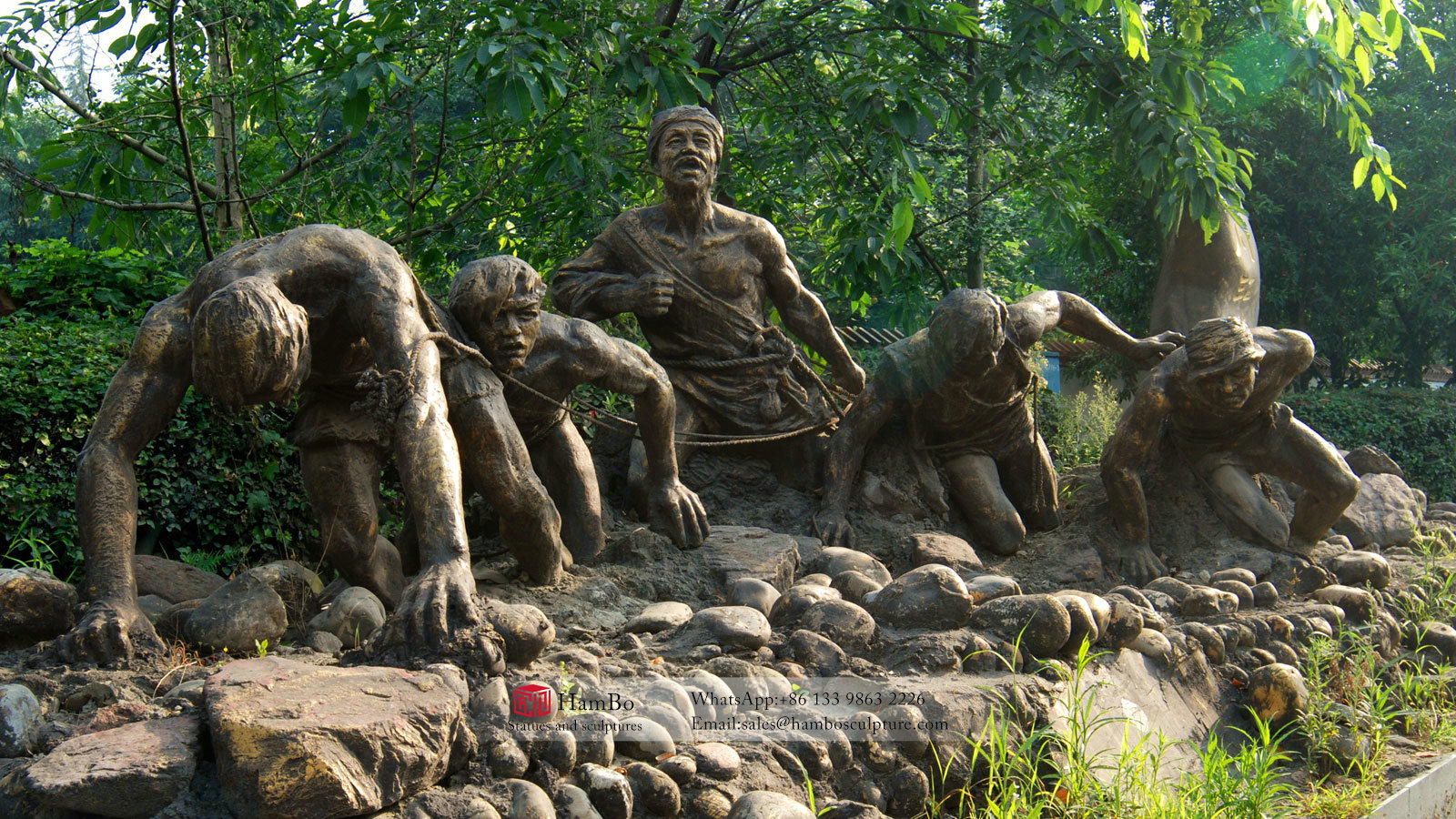
The scene of the boatmen working together to pull fibers presented in the sculpture also deeply reflects the spirit of unity and cooperation. Pulling fibers is a work that requires teamwork. Only when the boatmen think and work together can they smoothly pull the boat over the dangerous shoals. This spirit of unity and cooperation is crucial for the development of contemporary society. In a team, only mutual trust, support, and close cooperation among members can maximize the team's effectiveness and achieve common goals. In project cooperation within enterprises, employees from different departments need to collaborate closely and share resources in order to efficiently complete project tasks; In the construction of the community, residents also need to unite and participate in community affairs together in order to create a harmonious and beautiful community environment. The sculpture of the copper boatman showcases the power of unity and cooperation, reminding people to pay attention to teamwork and promote the spirit of unity in their daily lives and work. The optimistic smiles occasionally displayed by the boatmen in the sculpture also convey their optimistic and open-minded attitude towards life. Despite the hardships of life, boatmen can still maintain an optimistic attitude and face everything in life positively. This optimistic and open-minded spirit can help people maintain a positive attitude and cope with life's pressure and dissatisfaction in a positive way. When people encounter setbacks or difficulties in life, seeing the optimistic expressions of the boatmen in the bronze sculpture of the boatmen, they will be infected and adjust their mentality, looking at problems with a more optimistic attitude and finding solutions.
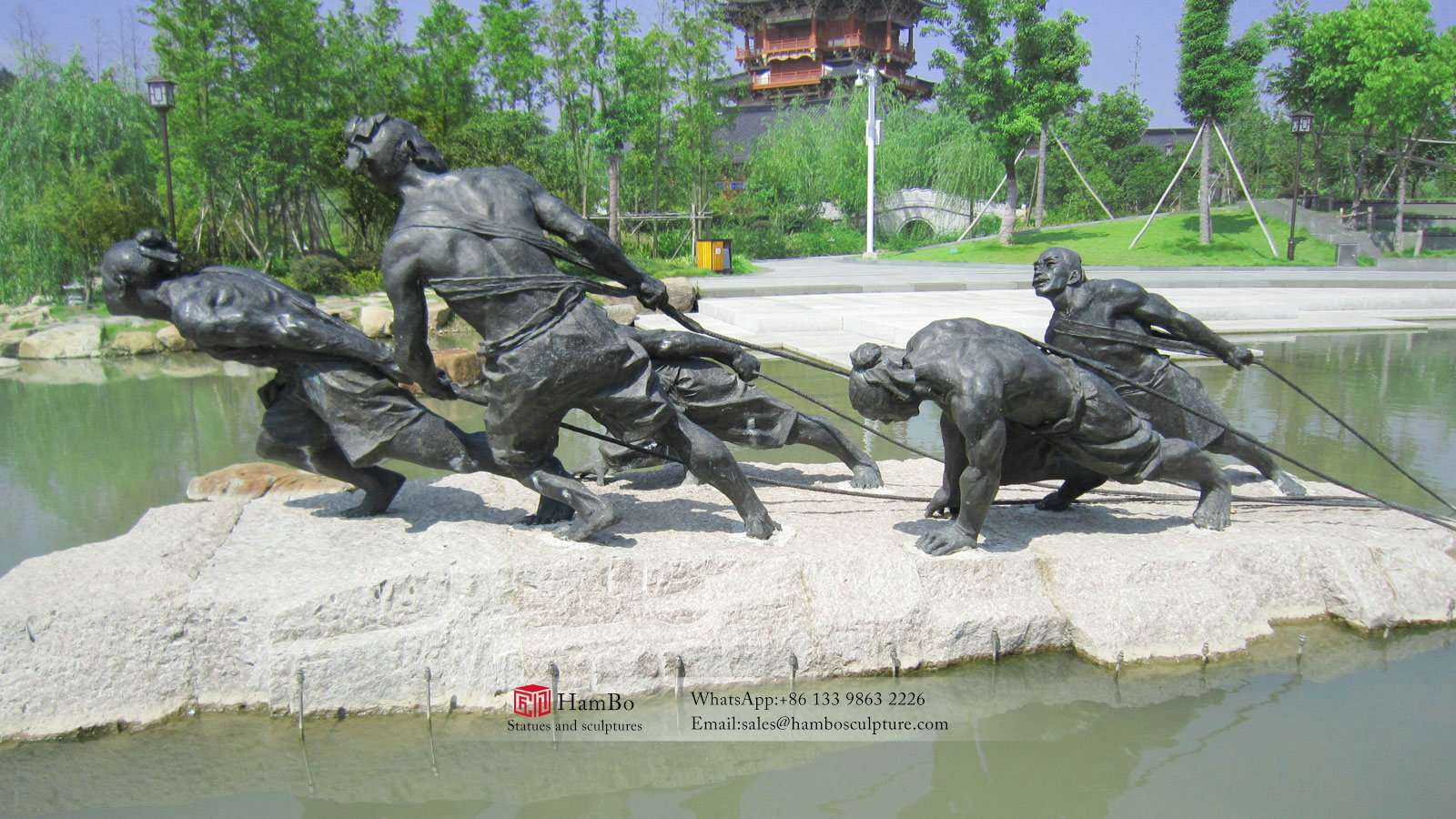
The sculpture of a copper boatman plays an extremely important role in shaping and spreading regional culture, becoming a unique symbol of regional culture. In many cities and regions along rivers, the culture of boatmen was once an important part of local people's lives, closely linked to the natural environment, folk customs, historical development, and other aspects of the area. The sculpture of the cast copper boatman, with its distinct regional characteristics and cultural connotations, vividly showcases the local historical style and humanistic spirit, becoming a beautiful business card of regional culture. In the Three Gorges region of the Yangtze River, bronze sculptures of boatmen can be seen everywhere. They are not only iconic landscapes in the area, but also symbols of the Three Gorges regional culture. The unique geographical environment of the Three Gorges region has created a unique way of work and life for the boatmen. The bronze sculpture of the boatman depicts the image of the boatman in the Three Gorges region and the scene of pulling fibers, showcasing the natural scenery, cultural customs, and the indomitable spirit of the Three Gorges people in their struggle against nature. These sculptures complement the landscape scenery of the Three Gorges, forming a unique picture of regional culture that attracts many tourists to come and admire. Tourists can not only appreciate the sculptures, but also gain a deeper understanding of the history and culture of the Three Gorges region, and feel the unique charm of the region's culture. For local residents, the bronze boatman sculpture carries their historical memories and emotional identification, and is a symbol of their love for their hometown. These sculptures allow them to have a better understanding of their hometown culture, enhancing their cultural confidence and sense of belonging. In the Volga River basin of Russia, bronze sculptures with the theme of Volga River boatmen also have important regional cultural significance. The Volga River is the mother river of Russia, and the image of Volga River boatmen has long been deeply ingrained in people's hearts, becoming a part of Russian culture. These sculptures showcase Russia's unique natural scenery and national spirit, providing people with a deeper understanding of Russia's history and culture. They are not only important symbols of Russian regional culture, but also an important window for the world to understand Russian culture.
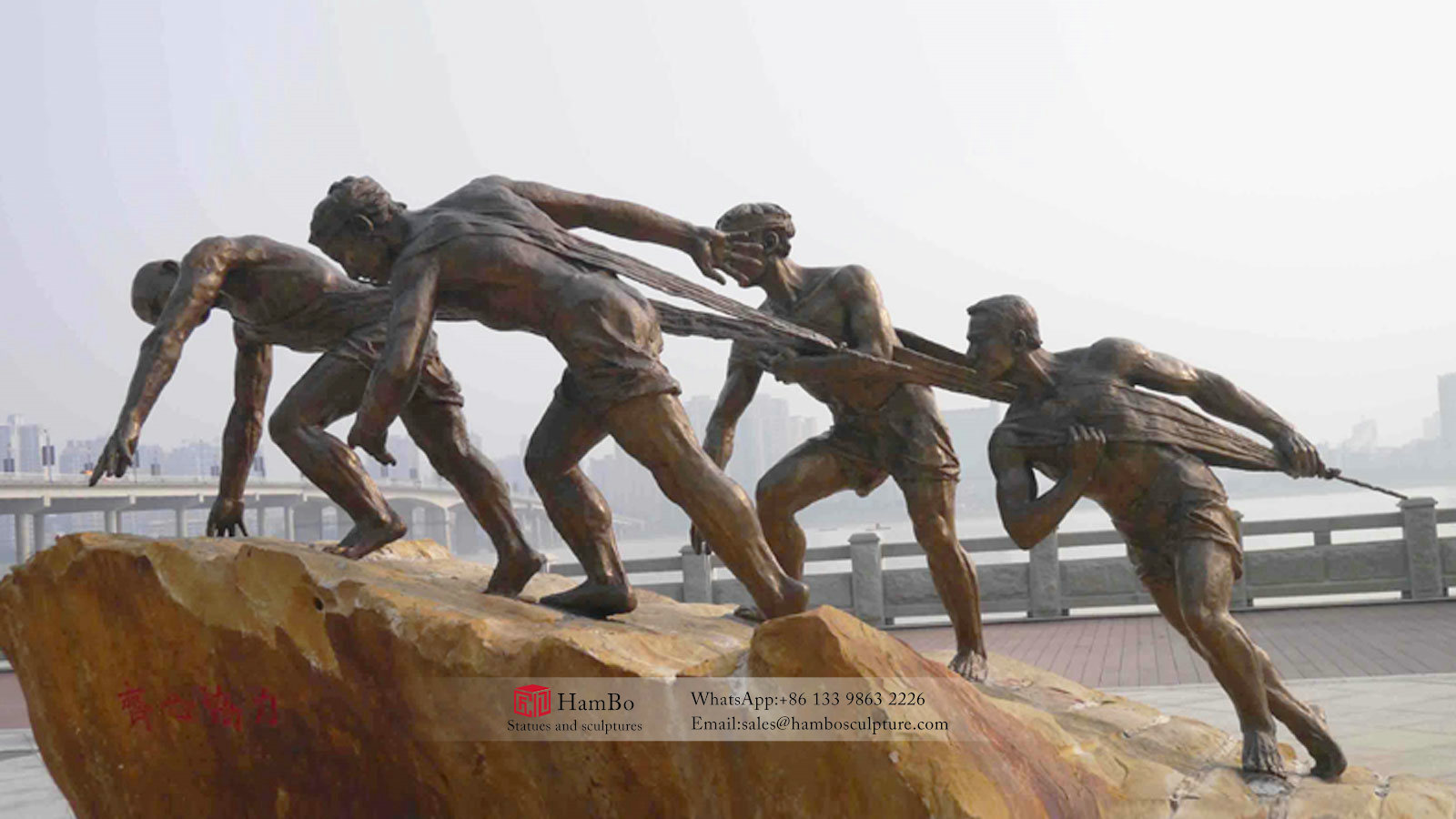
The sculpture of a copper boatman has become a shining new highlight in the field of tourism and culture, playing a huge role in promoting the development of the local tourism industry. In many cities and scenic spots along rivers and streams, the sculpture of the bronze boatman, with its unique artistic charm and profound cultural connotation, has attracted a large number of tourists to come and enjoy, becoming a landmark landscape of local tourism. In the Xianfu Cultural Tourism Area of Shennong Creek in Badong, Hubei Province, the cast copper Xianfu sculpture perfectly integrates with the local natural scenery and folk customs, presenting a vivid historical picture to tourists. Tourists who come here can not only enjoy the beautiful scenery of Shennong Creek, but also get up close to admire the sculpture of the cast copper boatman and feel the unique charm of boatman culture. These sculptures vividly depict the scene of the boatmen pulling fibers, making visitors feel as if they have traveled back in time and space to the era when the boatmen fought tenaciously against the river. Tourists can not only appreciate the sculptures, but also listen to the tour guide telling the stories of the boatmen, and understand the historical origins and spiritual connotations of the boatman culture. This immersive experience has given tourists a deeper understanding and appreciation of the boatman culture, and has also left a profound impression on their tourism in Shennong Creek. The existence of the bronze boatman sculpture has also driven the development of the local tourism industry. Around the sculpture of the boatman, the scenic area has developed a series of tourism projects related to the boatman culture, such as the boatman pulling experience and the boatman cultural performance. These projects allow tourists to participate more deeply in the experience of boatman culture, increasing the fun and interactivity of tourism. Many restaurants, homestays, and handicraft shops with the theme of boatman culture have emerged around the scenic area. Tourists can not only taste local cuisine, stay and rest, but also purchase some souvenirs related to the boatman culture, such as small ornaments of boatman sculptures, cultural shirts printed with boatman patterns, etc., bringing back beautiful memories of the boatman culture.
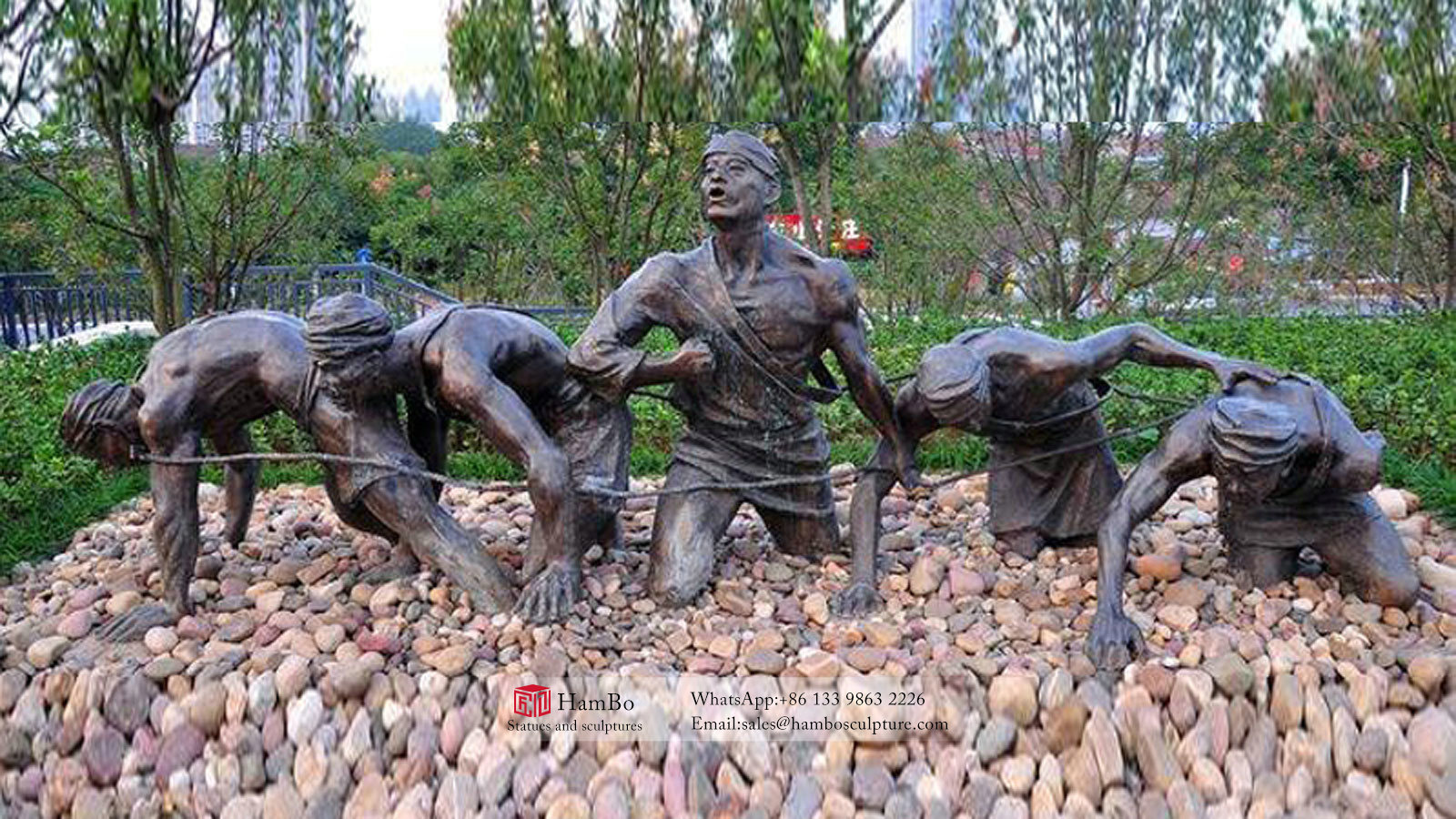
The sculpture of a copper boatman carries profound significance in the field of education and has become a vivid educational material. It helps students understand history and culture, cultivate correct values and outlook on life through intuitive artistic forms. In school education, bronze fiber sculptures can serve as teaching aids for subjects such as history, Chinese language, and art. In history class, teachers can lead students to the sculpture and explain the historical background and development process of the boatman culture, allowing students to have a more intuitive understanding of the development of ancient water transportation and the living conditions of the working people. When studying ancient poetry, teachers can combine sculpture to allow students to experience the hardships and resilience of the boatmen depicted by the poet. In art class, students can sketch and create sculptures of bronze boatmen to improve their painting skills and aesthetic abilities. The team collaboration, perseverance, optimism, and other spiritual qualities contained in the sculpture of the copper boatman can also have a positive impact on students' values and outlook on life. By observing the scene of the boatmen working together to pull fibers in the sculpture, students can deeply understand the importance of teamwork and learn to cooperate with others in learning and life to complete tasks together. The indomitable spirit of boatmen in the face of difficulties and hardships can also inspire students not to give up easily when they encounter difficulties in learning, to strive to overcome difficulties, and to persistently pursue their goals. The optimistic and open-minded attitude of the boatmen can guide students to face setbacks and disappointments in life with a positive attitude, and maintain an optimistic and upward spirit.
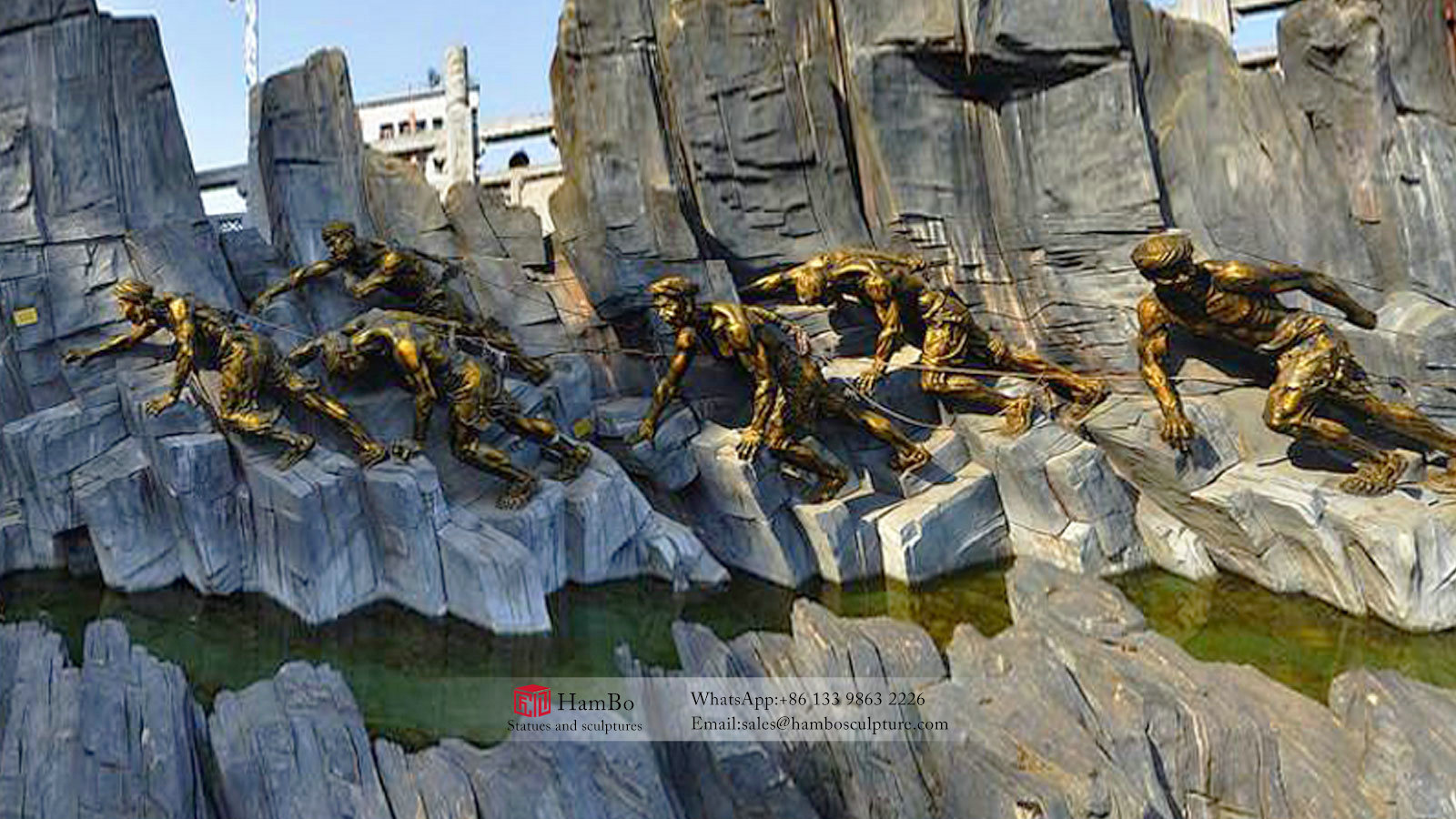
The sculpture of a copper boatman provides a rich source of inspiration for contemporary art creation, inspiring artists' creative enthusiasm and innovative thinking. Its unique artistic charm and profound cultural connotations provide artists with vast creative space and rich creative materials. Many artists have drawn inspiration from the sculpture of a copper boatman and created a series of excellent works of art. In the field of painting, painters focus on the theme of boatmen and use different painting styles and techniques to depict their living scenes and spiritual world. Some painters use realistic techniques to delicately depict the muscle textures, facial expressions, and labor postures of the boatmen, showcasing their sense of strength and resilience; Some painters use abstract techniques, combining lines and colors to express the spiritual connotations contained in the boatman culture, giving people infinite space for imagination. In literary creation, writers have created many touching novels, poems, and essays based on the stories of boatmen. These works showcase the lives, emotions, and struggles of boatmen from different perspectives, allowing readers to experience the unique charm of boatman culture. In music creation, musicians have taken inspiration from the boatman's trumpet and created many music works with ethnic characteristics. These works combine the rhythm and melody of the boatman's trumpet with modern music elements, forming a unique musical style that is deeply loved by people. The sculpture of a copper boatman also promotes communication and integration between different art forms. Artists, in the process of creation, draw inspiration from the artistic expression techniques and cultural connotations of bronze fiber sculptures, and integrate them into their own works, thus promoting artistic innovation and development. When sculptors create sculptures of other themes, they can draw on the techniques of depicting the postures, expressions, and muscle lines of the figures in the copper fiber sculpture, making the works more vivid and realistic; Dancers can draw inspiration from the movements of boatmen pulling fibers and create dance pieces with a sense of power and rhythm; Dramatists can create theatrical works with profound ideological connotations based on the story of a boatman. The exchange and integration between different forms of art not only enriches the forms and contents of artistic creation, but also injects new vitality into the development of art.
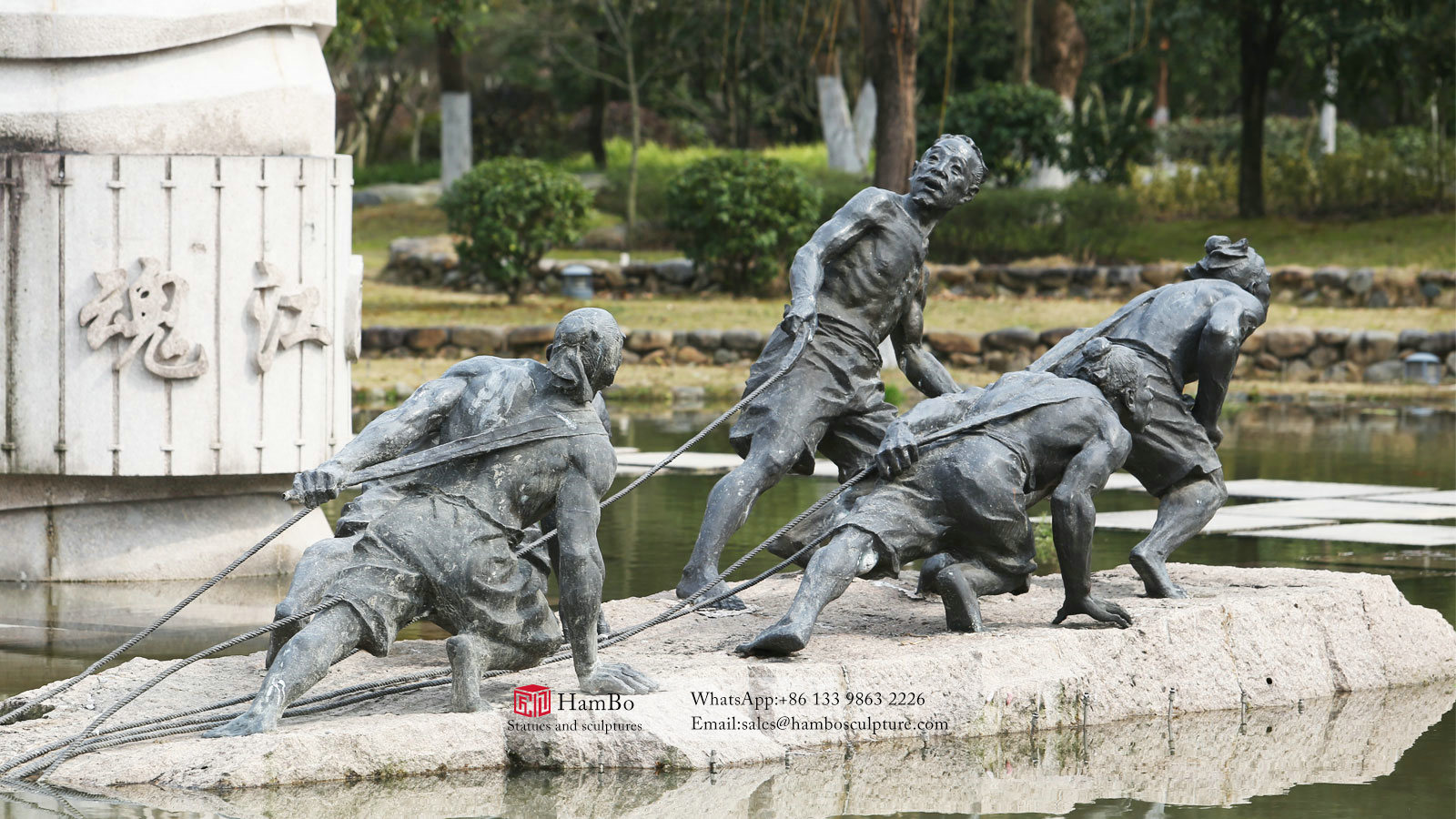
The bronze sculpture of the boatman, with its unique artistic form, preserves the historical memory of the boatman culture for us, inherits the spirit of perseverance, unity, cooperation, and optimism of the boatmen, and has become a unique symbol of regional culture. In modern society, it has demonstrated significant value in fields such as tourism culture, education, and artistic creation, adding rich cultural connotations to our lives. However, the inheritance and development of the boatman culture is not achieved overnight, and we still face many challenges at present. But as long as we work together as a whole society, actively explore innovative ways of inheritance, increase protection efforts, and improve public awareness and participation, we will definitely be able to make the boatman culture shine more brilliantly in the new era. Let us cherish the cultural treasure of the cast copper boatman sculpture, and integrate the spirit contained in boatman culture into our lives and work, inspiring us to move forward bravely, unite and cooperate like boatmen on the road of life, face all difficulties with an optimistic attitude, and strive for the great rejuvenation of the Chinese nation. In the future, I hope that the bronze sculpture of the boatman can continue to stand in every corner of the city, becoming an indelible cultural imprint in people's hearts, and allowing the spirit of the boatman culture to be passed down forever, leaving an eternal echo in the long river of history.
